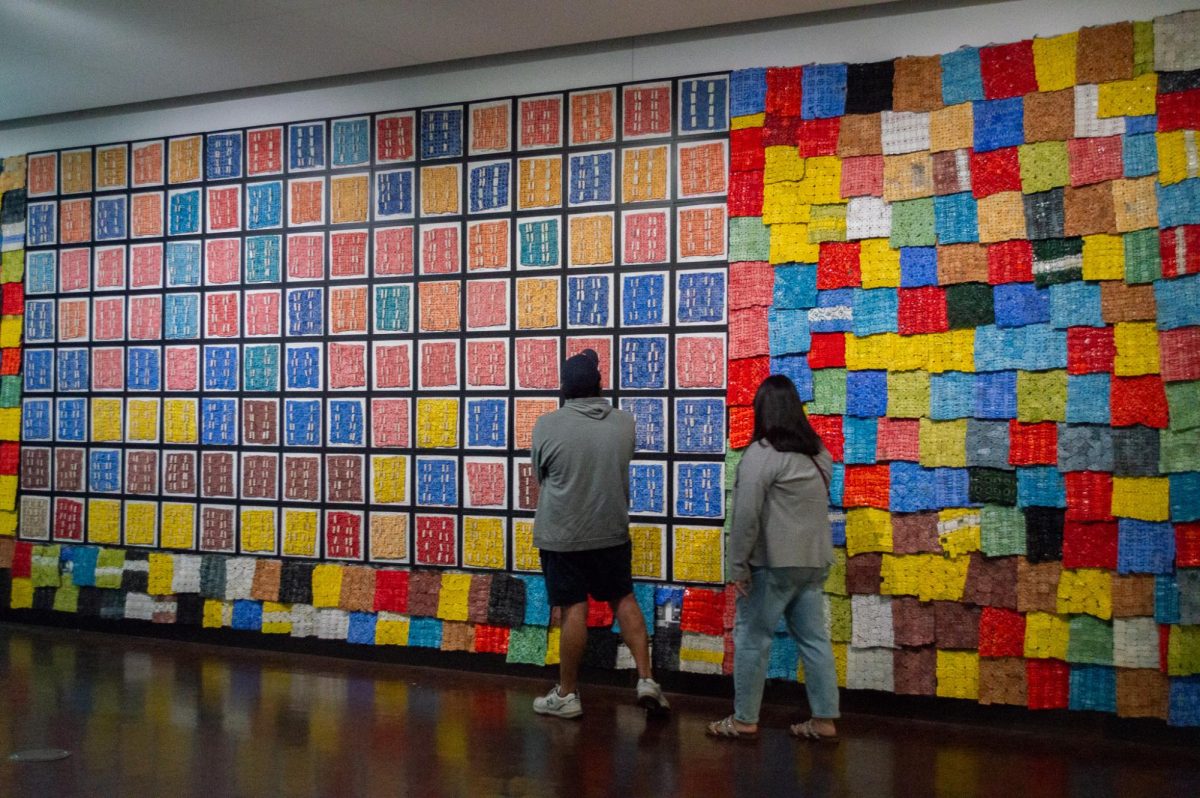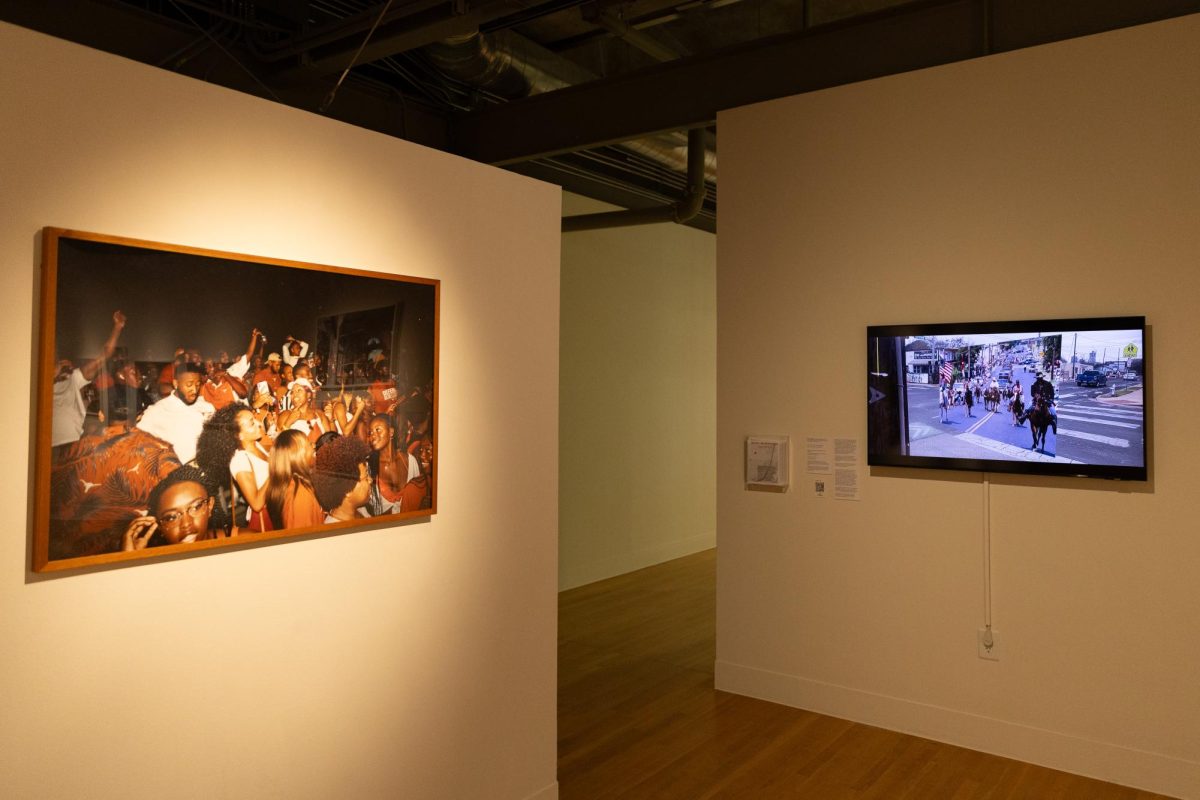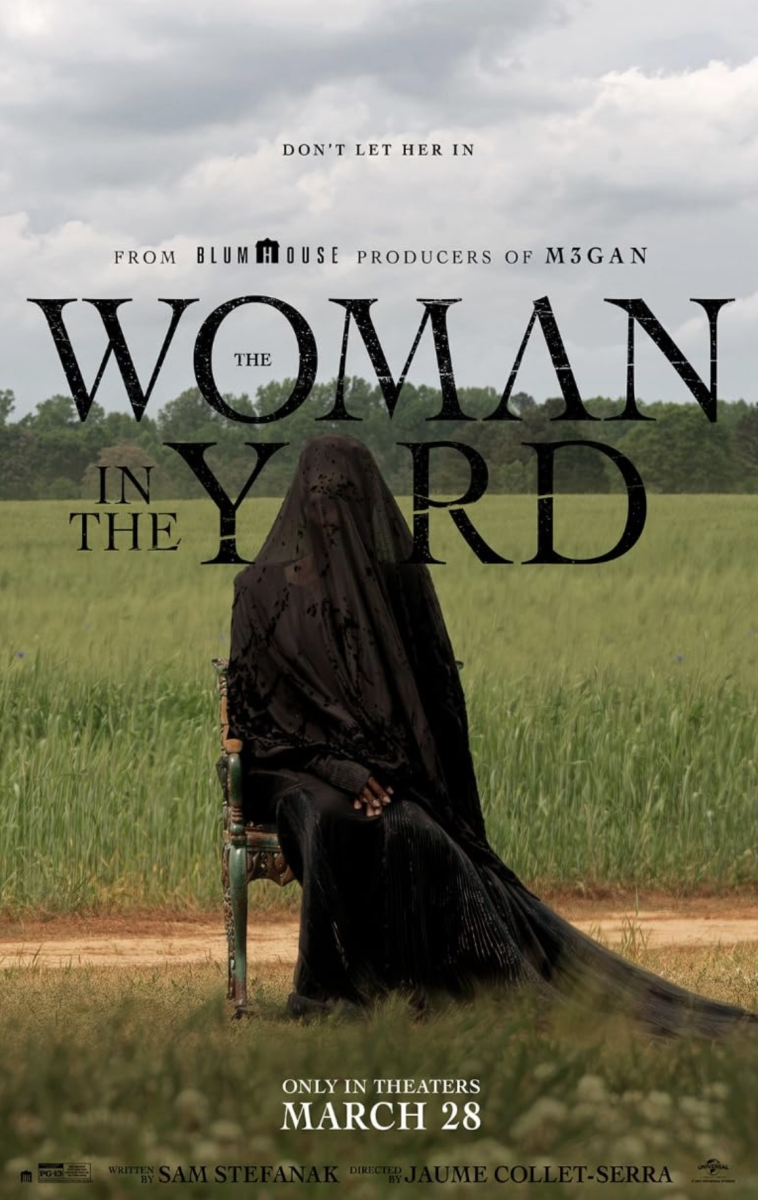Shining under the lights of Austin Public Library, panels of colorful beaded glass twist and flatten to reveal a patchwork of geometric figures. At the center of this exhibition is Moyo Okediji, an artist whose latest exhibition highlights the complex history of indigenous Africa.
The work of Okediji, a professor in the Department of Art and Art History, will be on display at the Austin Public Library until April 27. Okedjii said that the inspiration behind his show, titled “Beauty and the Beads: Divine Fire and Color in Transatlantic Beaded Art,” derived from the idea that every beautiful thing contains an ugly side.
“Beads are incredibly beautiful, but there is an ugly side to beads that we tend not to know,” Okediji said. “It was through research that I got to know that behind the glitters and beautiful colors of (glass) beads, (there is an) unfortunate historical narrative in bead making.”
Okediji said that beads were the cause of both separation and reunification in African history.
“Human beings were abducted and trafficked … and millions upon millions of beads were manufactured in exchange for these Africans … and so the Africans embedded the beading into their traditions,” Okediji said. “What is fascinating is that the same beads responsible for the alienation and trafficking of Africans also facilitated the unity of the Africans once they crossed into the diaspora.”
Nicole Parker, the show’s curator, said she and Okediji have worked on the exhibition for over two years. She said the library’s accessibility made it a unique place to display the work.
“The nice thing about the library is it’s open to everybody,” Parker said. “People feel more welcome because there’s no pressure to pay for things. There’s different voices (and) perspectives of people who may not otherwise come across that information … outside of a formal gallery or museum.”
Parker also said that Okediji’s work reflected the library’s mission.
“We have our vision of discovering, learning, and creating at the library,” Parker said. “Especially with Dr. Okediji’s exhibit, because he is a very prestigious artist and historian, I think we’re able to reflect the mission of Austin Public Library visually.”
Adeola Olagunju, an art history graduate student who helped with the show’s installation, said each viewer engages with the art in their own way.
“Whatever it is that you take away from it is a projection of what you think,” Olagunju said. “Are you fascinated by all the colors? Are you interested in the stories? This is what I want to see … people allowing their own subjectivity to take over.”
Okediji said Africans have reclaimed the beads of their culture, making his exhibition highlight the duality of African history.
“The Africans used these beads in all kinds of ways: as currency, as items of marking identity, as rituals in spiritual activities, as markers of power and for everyday use,” Okediji said. “When the Africans arrived in the diasporas, they continued the usage of beads to the extent that it has become part of the unifying factors — almost a symbolic linkage among Black people.”










